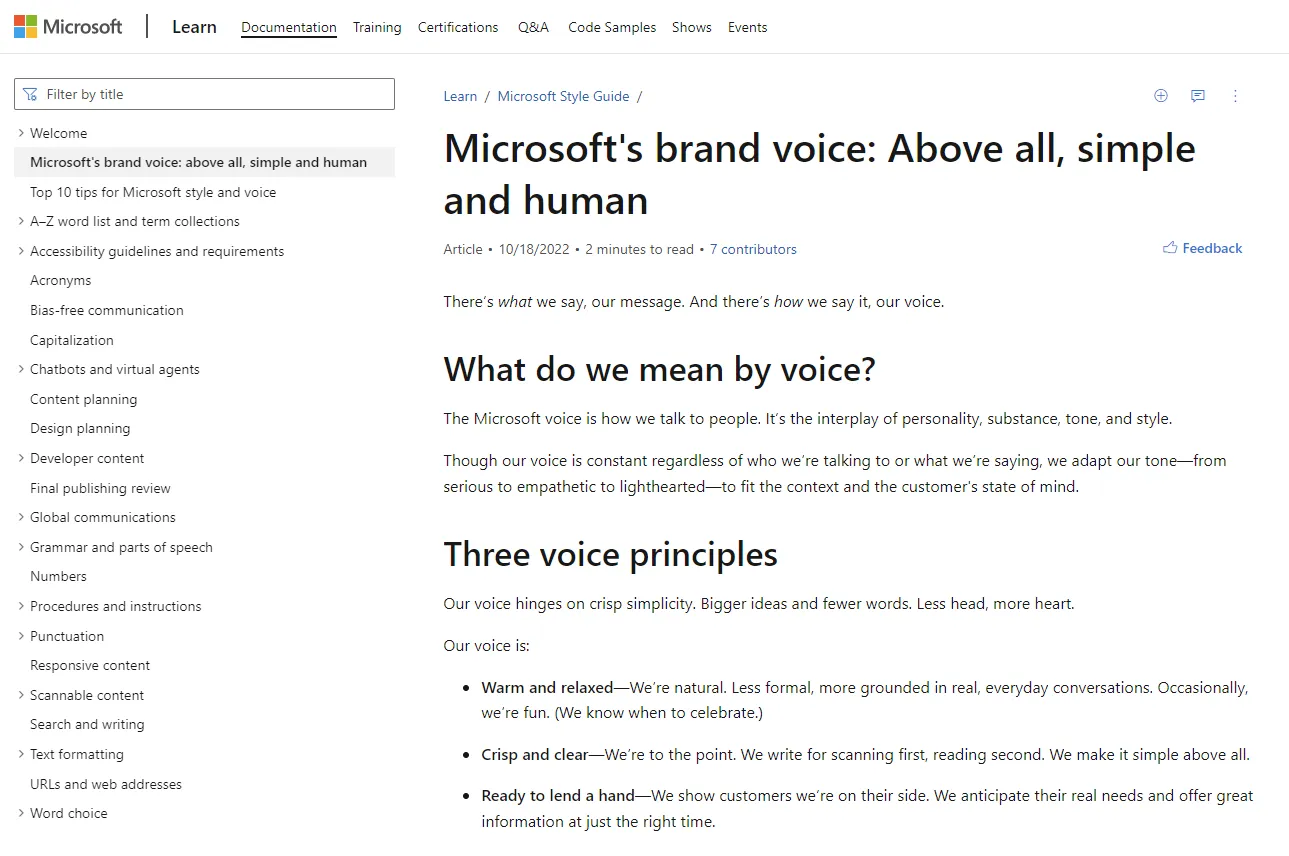A key ingredient for consistency in content strategy - style guides
Style guides are commonly used in technical writing, can and should they be leveraged in content strategy?
During the first month of the first semester of the master’s degree course Content Strategy, I had the opportunity to prepare a short BarCamp session together with my classmates Kathi Grelk and Larissa Burkhardt on “What technical writing can teach us for content strategy”.
As all three of us have a background in technical writing, when we were tasked with creating a BarCamp session, we decided to join together and prepare something inspired by this field. After some discussion, we agreed on narrowing the topic down to style guides and asking questions such as:
- Is consistent writing relevant for content strategy?
- How can you reach consistency across different authors?
- What should be in a style guide?
- How many style guides do you need to cover every aspect of consistency?
Before I delve into the questions and their respective answers, I’d like to define first what a style guide is.
What is a style guide?
Brenda Huettner defines a style guide as a:
“A set of guidelines and standards covering areas such as vocabulary, editing, tone, and voice. May extend to structural aspects of content.” (Abel and Bailie, 2014)
I like this definition because it is quite clear and concise, leaving a lot of freedom for interpretation on what should be included in a style guide.
What is a style guide for?
Huettner’s definition covers quite nicely what a style guide is, however, it doesn’t mention why you use one. The goal that you try to achieve with a style guide is to ensure that all the content produced in an organization is consistent.
Knowing this, we can already address the first two questions: is consistent writing relevant for a content strategy? And how can you reach consistency across different authors?
Most organizations, especially larger ones, don’t have only one person producing all their content. Different teams in different departments produce small parts of content for an organization’s website, product text, social media, documentation platforms, presentations, leaflets, etc. Furthermore, all communication happening between the company and clients can be seen as content: support messages, chatbots, emails, and even phone calls.
Just for these few content types, you can imagine that multiple people are involved, each with their background and writing style. Left to their own devices, every person would produce content according to a different style. This can result in a confusing mix that can make worsen the experience of users and clients interacting with your company.
As content strategy means creating a strategy to optimize the content production of an organization, creating a style guide to align every content-producing team is crucial to its success.
What should be in a style guide?
The definition mentioned above states that a style guide should include a set of guidelines and standards for vocabulary, editing, tone, voice, and structure.
How much or how little you include in a style guide depends on the complexity of your content ecosystem. And, as I’ll cover below, different departments may have different requirements from a style guide.
During our Barcamp presentation, my colleague Kathi Grelk covered this topic very well and gave some examples of what should be in a style guide. Here’s a quick overview:
Style instructions
- No abbreviations
- British English spelling, not American English
- Numbers between 1 and 12 are spelled out
Stylistic instructions
- No subordinate clauses
- Active sentences, not passive sentences
- No technical terms/ technical terms must be explained or hyperlinked to a glossary
Structural instructions
- H1 must be longer than 1 word but no longer than 5 words
- Every heading needs text
- H3 may not directly follow H2
- Headings must add value
Content instructions
- Every sentence/ paragraph must add new information
- Coherent structure of article/ No jumping between topics
- The text must align with Content Strategy/ Brand Messaging
SEO instructions
- Anchor texts need to align with the keyword of the linked article
- 2 to 4 hyperlinks per article
- Main keywords may not appear in each H2
Picture instructions
- Pictures must be 200x400 px
- Pictures may not be bigger than 200 KB
- Every picture needs a sub-headline and ALT-Text
Needless to say, a style guide can include even more guidelines than this, but it’s a great starting point to get an idea of what one can look like. You may also find accessibility requirements, bias-free communication, and brand voice description in a style guide. Furthermore, having a section that summarizes all recent changes could be helpful for style guide users.
How many style guides do you need to cover every aspect of consistency?
Style guides are meant to be created to align different teams or individuals on how to produce content that feels and looks consistent. However, every team may have different requirements depending on the type of content that they’re producing.
For example, a technical writing team may need guidelines on structuring text or taxonomy more often than a social media team. And technical writers may not require to know how to use emojis.
You may think each team should create its style guide, but this can become counterproductive to achieving consistency across departments.
So, what’s the solution?
It’s left to each organization how they decide to structure their style guide and organize it around their teams, but I think a great good practice example is the Microsoft Style Guide. This guide has been used as a starting point for many technology companies creating their style guides.
The Microsoft Style Guide collects all the information that is relevant for everyone in the company in one place but also has sections that are more specific to different teams (i.e., chatbots and virtual agents, developer content, global communication, etc.) The whole style guide is searchable, making it easy for users to find what they need at the click of a button.
 A screenshot of the Microsoft Style Guide
A screenshot of the Microsoft Style Guide
Style guides in content strategy
With this article, I wanted to reiterate the importance of style guides in a content strategy. Style guides have always been the basis of consistency for technical writing and marketing communication, but it’s crucial that their use is expanded above a single team. They need to be leveraged as an asset to achieve consistency in a content strategy, thus improving the overall content experience for users.
However, it’s important to point out that just creating a content strategy and making it available for everyone doesn’t automatically mean that every person producing content in an organization will use it. Hand in hand with a style guide there should also be an implementation plan, or an operations team, to ensure that it’s actually being followed, regularly updated, and reviewed.
Resources
Abel, Scott and Rahel Anne Bailie. (2014). The Language of Content Strategy
Microsoft style guide. https://learn.microsoft.com/en-us/style-guide/welcome/
